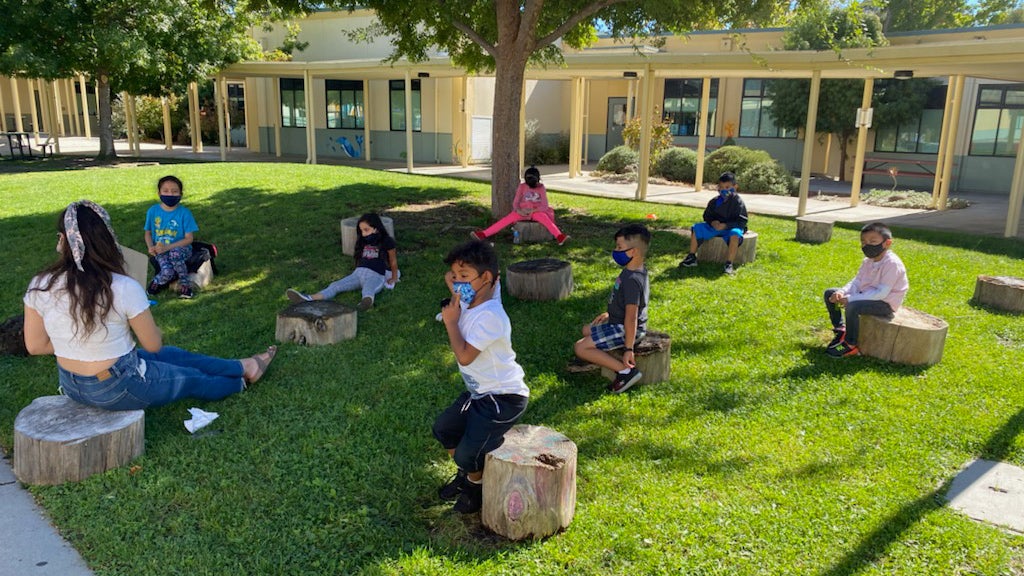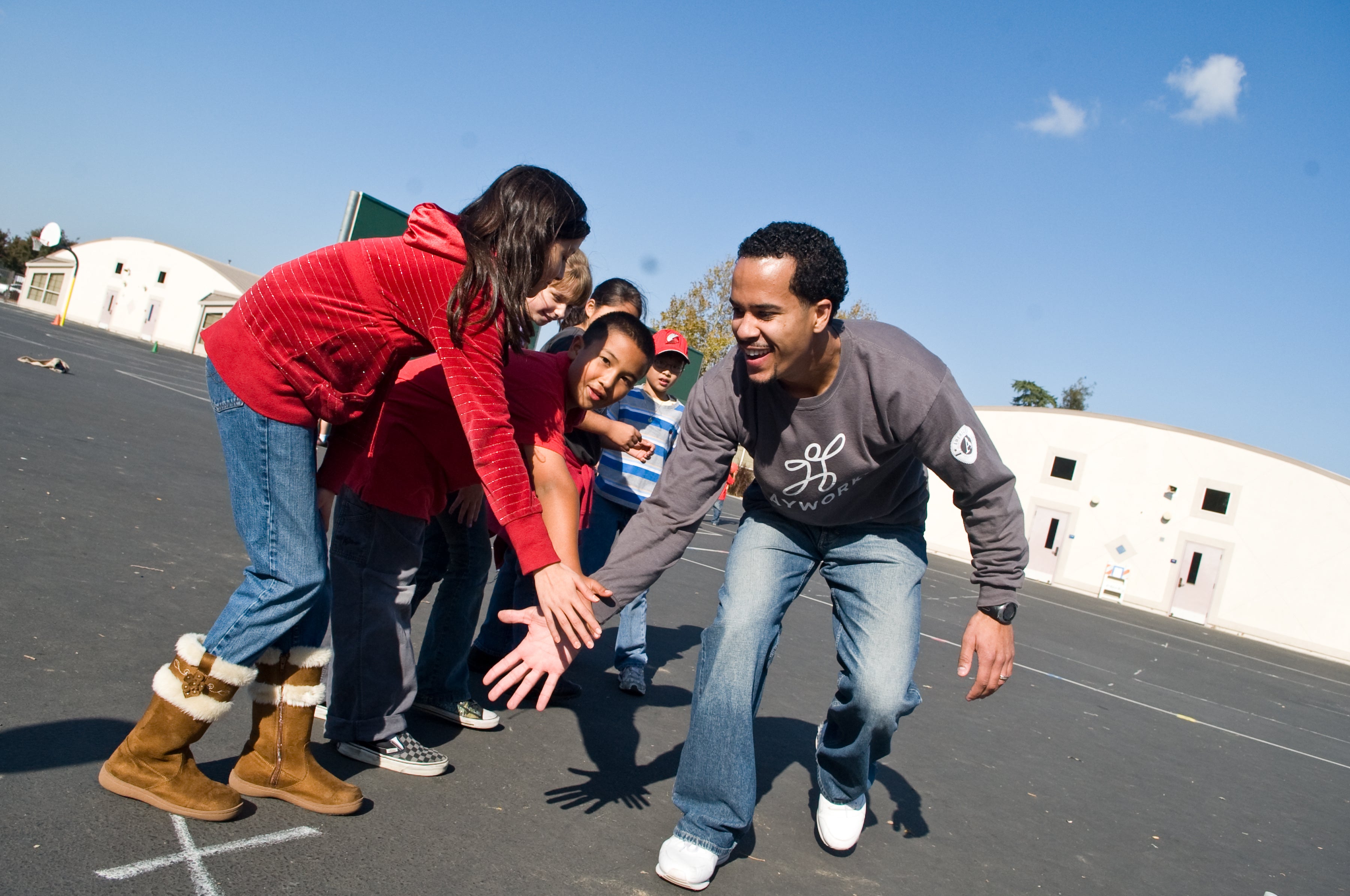Out-of-school time intermediaries don’t always get the credit they deserve. These organizations often oversee communitywide systems of afterschool, summer and other out-of-school-time (OST) programs, and they play a key role in making sure resources are directed where they are needed most.
Nowhere is this more true than in California, where Jennifer Peck founded the Partnership for Children and Youth (PCY) more than 20 years ago. PCY’s mission is to make sure children and youth in the most under-resourced communities receive quality expanded learning opportunities that support their academic, social, emotional and physical well-being.
Now, after two decades of advocacy and capacity-building work, Peck is stepping down as president and CEO and looking forward to the next chapter for the organization. We sat down with Peck to understand the evolution of PCY, what she learned during her tenure and her insights on the current state and future of the OST sector.
Wallace Foundation: Why is the role of an intermediary organization, like PCY, so critical to the afterschool sector?
Jennifer Peck: People in policymaking roles at different levels can be very disconnected from the realities of how public resources play out at the ground level. The big learning for us very early on was that we needed to be a link or a translator between on the ground realities and public policies. We discovered that the very communities that most needed public funding for things like afterschool programs had the least capacity to access it. In many of the communities that we were trying to support, they didn't have the resources or the capacity to apply for often very complex, state and federal grants. We brought together philanthropic partners to help us donate technical assistance in the form of grant writers and other experts who could help schools and community partners get a foot in the door with big public dollars.
In addition to helping schools and community organizations access funding, we realized very quickly that we also needed to communicate back to the state and federal government that RFPs were too long, or the questions were unreasonable or the terms of the grants didn’t allow for enough time to get anything done. We were going to be this thing called an intermediary to be that link so that public resources would become more accessible to the communities that needed them the most.
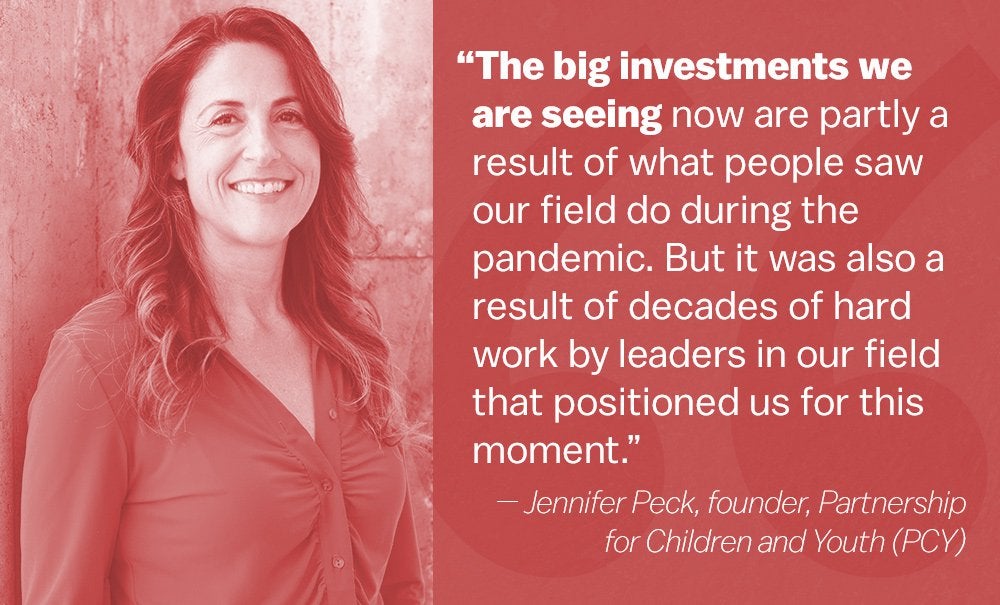
WF: What have been some of PCY’s greatest policy and advocacy wins for afterschool in the state of California?
JP: There are so many examples of things that we have influenced big and small. One is around the implementation of Proposition 49 in California, which was a huge investment at the time—$550 million—in afterschool. That catapulted California to a place where we were investing more than all other states combined in afterschool programs. Our organization led the implementing legislation for Proposition 49 to guide how the money was going to roll out to communities.
There were a couple of really important things we accomplished in that implementation effort. One was around accountability. Prior to this point, California had been measuring the success of publicly funded afterschool programs by student grades and test scores, which was misguided and not research-based. We fought hard to shift the accountability measures in our state to focus on attendance because we knew from the research that if the afterschool program is good and kids are coming, then they're going to go to school more often. We won on that policy shift.
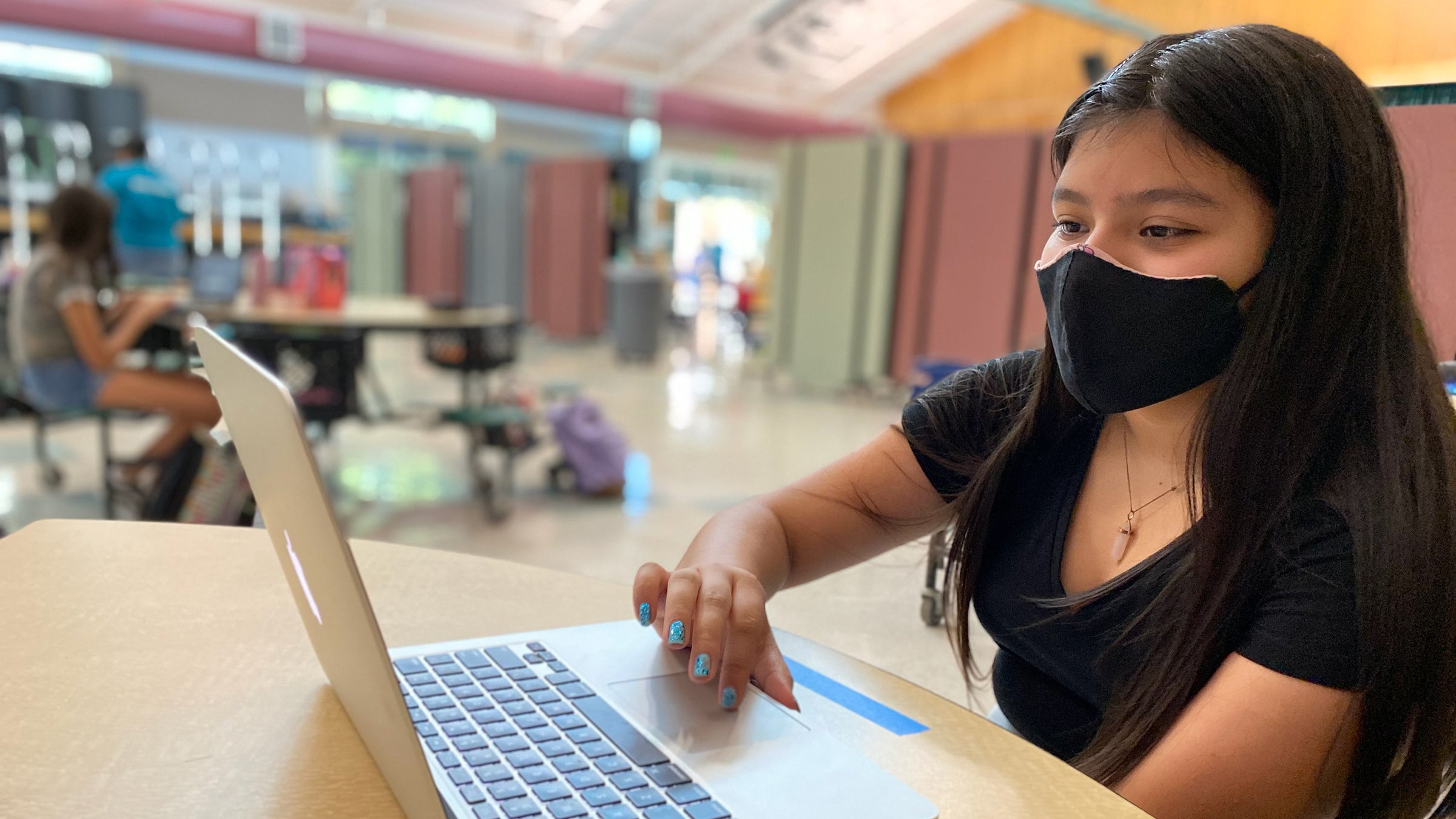
The other important thing we did in the implementing legislation was make sure that all this new funding was focused on the kids who needed it most. The proposition as originally written and passed by the voters would have given a very small grant for an afterschool program to every elementary and middle school in the state, whether you were in South Central LA or in Beverly Hills. We did not believe this was the best use or an equitable use of public resources. We made sure the legislation prioritized schools that had 50 percent or more kids eligible for free and reduced lunch, which meant also making the grant amounts much higher so that these schools could actually do something with the money.
WF: What are you most proud of about PCY’s legacy to date?
JP: One of the things that PCY has done really, really well as an intermediary is built relationships across the system with K-12 leaders, education equity groups and policy leaders at different levels. We've approached our relationship-building work broadly and strategically so that we could call on leaders and influencers that we have needed at different moments during this journey. We've seen our work in educating and influencing others about expanded learning as a powerful role that intermediaries can play. I’m extremely proud that all the relationships and awareness we've built over the years played a big role in positioning our field for the historic afterschool and summer learning investments we are now seeing in our state.
WF: The pandemic has had a significant impact on the out-of-school time sector. What gives you hope and what keeps you up at night?
JP: In a state where afterschool programs are heavily run through schools, that meant so many kids lost access to these essential services while schools were shut down last year. Our providers around the state were the ones that were opening up learning hubs for homeless kids, for English learners, for kids whose parents had no choice but to be at work. All of the difficult circumstances we know that kids went through, our folks stepped in to make sure kids got their meals, Wi-Fi devices and, in many cases, they just found places and ways to serve kids creatively. We and our partners documented and communicated a lot about these amazing efforts and our field got some overdue recognition. The big investments we are seeing now are partly a result of what people saw our field do during the pandemic, but it was also a result of decades of hard work by leaders in our field that positioned us for this moment.
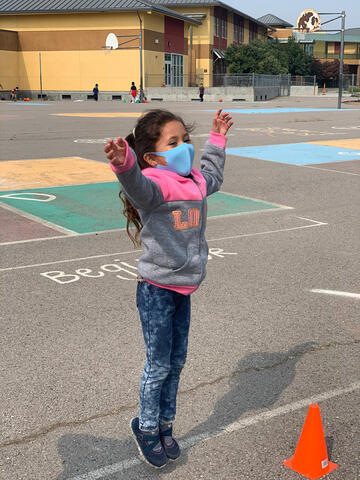
In California, for example, on top of the federal investment last spring, the state put in $4.6 billion in emergency COVID money just for expanded learning. Our half-a-billion-dollar investment in afterschool previously was by far the largest in the nation and now $4.6 billion was being pumped into this system, plus the federal money, and now even more state money that’s meant to be ongoing. I never thought I'd see a day when we got so much more investment than we even asked for. But we now have the opposite challenge, which is that there's so much money coming into the system all at once that there's little capacity to implement it effectively. We are very focused right now on trying to influence how implementation happens based on everything we know from research and experience about quality, impactful program delivery. We are also very focused on documentation and storytelling. We must be constantly telling the story to policy leaders about the difference this investment can make for kids, so that we have a chance to sustain it over time.
WF: If you could wave a magic wand and make one policy change to impact students and youth, what would it be?
JP: One thing that remains a gap that I hope is going to shift, is how we're supporting our community-based program providers. In California, the massive investment of expanded learning funds is all going through school systems, so schools are responsible for implementing programs. I understand the instinct around that by our state leaders because we want these services, supports and opportunities to be aligned with educational outcomes. However, it creates a power dynamic around the resources that plays out in ways that aren't necessarily beneficial to implementing quality programs at the local level.
In some places, our community-based organizations have much more experience and expertise at delivering high-quality expanded learning than our school systems do. Yet, it's up to the whims of the district around whether they're going to bring in a community-based partner and how much they're going to pay them or honor them for their time and work. I want to see a portion of this investment going directly to support our community-based sector.
And then, aligned with that in policy, I want to see more teeth around what is currently an encouragement of districts to collaborate with communities in this work. Current policy articulates that community partnerships are important; it tells school districts that they should be including community organizations of all kinds in their planning and implementation which is a great step, but there’s no requirement. That's something else I think needs to change.
Photos courtesy of Boys & Girls Clubs of Sonoma-Marin and Bay Area Community Resources
